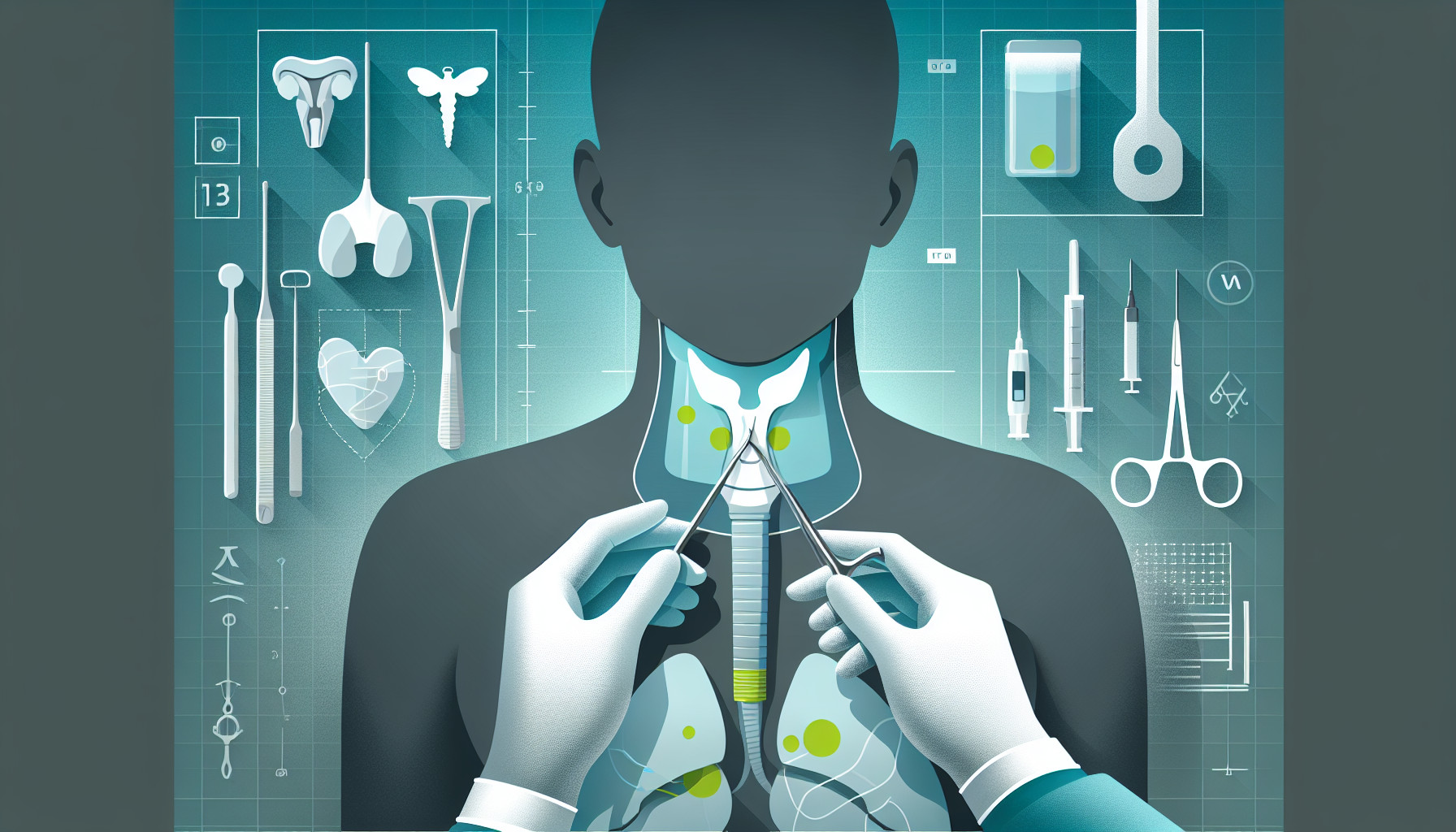Our Summary
This research paper is about a new technique for performing thyroid surgery, called the transoral endoscopic thyroidectomy vestibular approach (TOETVA). This technique has been gaining interest in the medical community over the last two years. The researchers have been able to successfully use this method on live patients without using CO2 gas, which is typically used in these types of procedures. Instead, they used a special tool they designed called a self-retaining retractor.
They looked at the medical records of 15 patients who had this type of surgery. They were able to successfully do the surgery on all 15 patients. The surgery involved either removing part of the thyroid (13 patients) or the whole thyroid (2 patients).
After the surgery, no patient had serious complications such as nerve damage or long-lasting low calcium levels. One patient did have temporarily low calcium levels but recovered within two months. There were no wound infections and no visible scars or dimples on the neck of any patient.
In conclusion, this new method of performing thyroid surgery without CO2 gas seems to be effective and safe. It gives the surgeon enough room to work and a good view of the area, without any risks associated with CO2 gas use.
FAQs
- What is the transoral endoscopic thyroidectomy vestibular approach (TOETVA)?
- What were the results of the study on gasless TOETVA performed on 15 patients?
- What are the potential complications of a gasless TOETVA?
Doctor’s Tip
A helpful tip a doctor might tell a patient about thyroidectomy is to follow postoperative care instructions carefully, including taking prescribed medications, attending follow-up appointments, and monitoring for any signs of complications such as difficulty breathing, swallowing, or speaking. It is also important to avoid strenuous activities and heavy lifting for a certain period of time to allow for proper healing. Additionally, maintaining a healthy diet and staying hydrated can help support the recovery process.
Suitable For
Patients who are typically recommended for thyroidectomy include those with:
- Thyroid cancer
- Large thyroid nodules causing symptoms such as difficulty swallowing or breathing
- Graves’ disease
- Recurrent thyroid nodules
- Thyroid nodules that are suspicious for cancer
- Thyroid nodules that are causing hyperthyroidism
- Patients with a family history of thyroid cancer or multiple endocrine neoplasia type 2
- Patients with a history of radiation therapy to the head and neck
It is important for patients to discuss their individual situation with their healthcare provider to determine if thyroidectomy is the best treatment option for them.
Timeline
Before thyroidectomy:
- Patient is diagnosed with a thyroid disorder (such as cancer, goiter, or hyperthyroidism) through physical examination, blood tests, and imaging studies.
- Patient undergoes preoperative preparations, which may include blood tests, imaging studies, and consultation with an endocrinologist or surgeon.
- Patient may need to adjust medication or undergo radioactive iodine therapy to prepare for surgery.
After thyroidectomy:
- Patient undergoes thyroidectomy surgery, either a partial (lobectomy) or total thyroidectomy, under general anesthesia.
- Patient is monitored in the recovery room for any immediate postoperative complications.
- Patient may stay in the hospital for a day or two for further monitoring and management of pain and potential complications.
- Patient is discharged from the hospital and advised on postoperative care, including medication management and wound care.
- Patient may experience temporary side effects such as hoarseness, difficulty swallowing, and temporary hypocalcemia.
- Patient follows up with the surgeon for postoperative evaluation and monitoring of thyroid hormone levels.
- Patient may need to undergo radioactive iodine therapy or hormone replacement therapy depending on the underlying condition and extent of thyroidectomy.
What to Ask Your Doctor
- What are the reasons for recommending a thyroidectomy?
- What are the potential risks and complications associated with a thyroidectomy?
- What are the expected outcomes and recovery time after a thyroidectomy?
- Will I need to take thyroid hormone replacement medication after the surgery?
- How will my voice be affected after the surgery?
- Will there be any visible scarring on my neck after the surgery?
- How many thyroid surgeries have you performed using the TOETVA approach?
- What is the success rate of TOETVA in terms of avoiding complications such as recurrent laryngeal nerve palsy and hypocalcemia?
- What is the difference between gasless TOETVA and traditional thyroidectomy procedures?
- Are there any specific post-operative care instructions or restrictions that I should follow after the surgery?
Reference
Authors: Park JO, Park YJ, Kim MR, Sun DI, Kim MS, Koh YW. Journal: Surg Endosc. 2019 Sep;33(9):3034-3039. doi: 10.1007/s00464-019-06826-7. Epub 2019 May 13. PMID: 31087173
